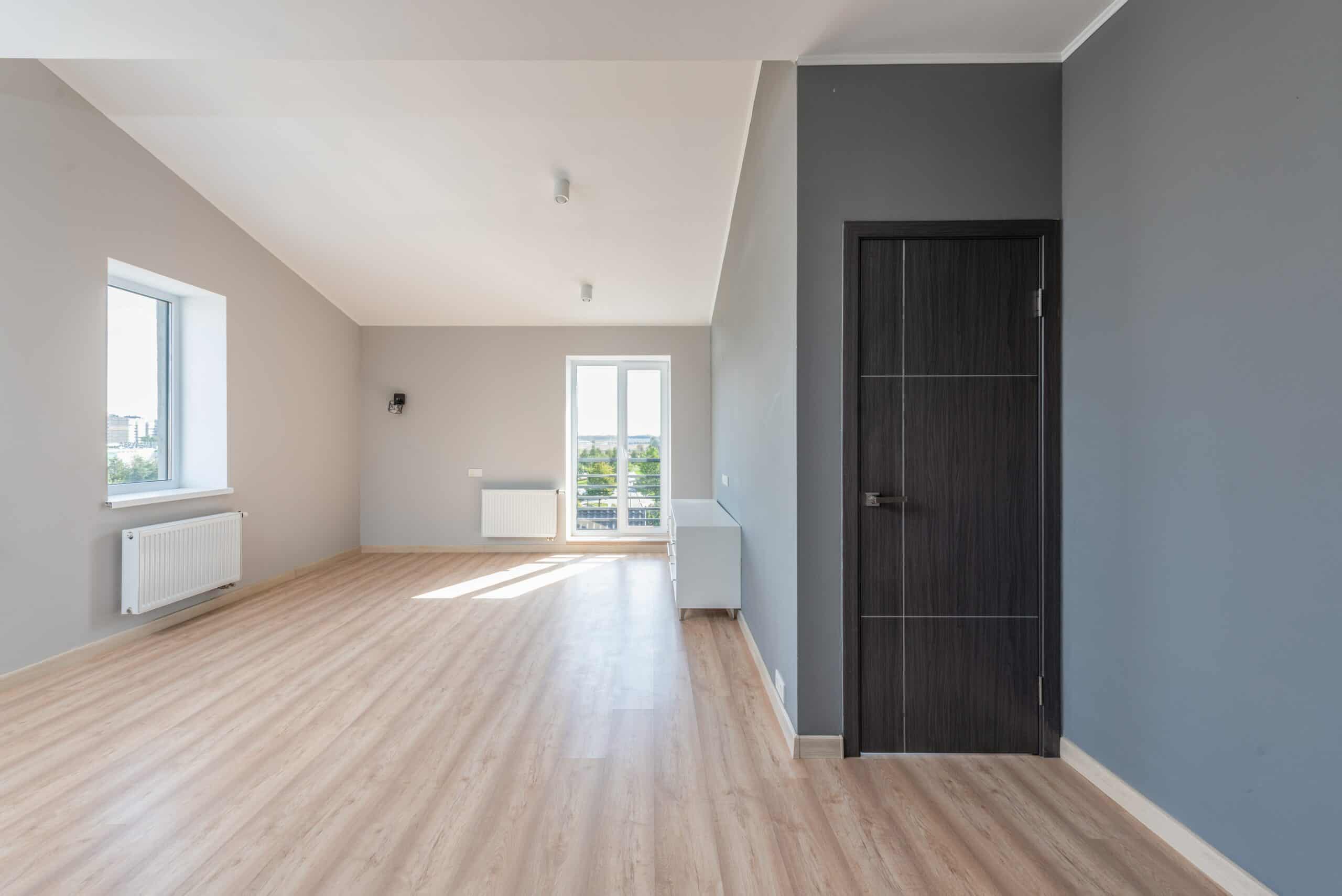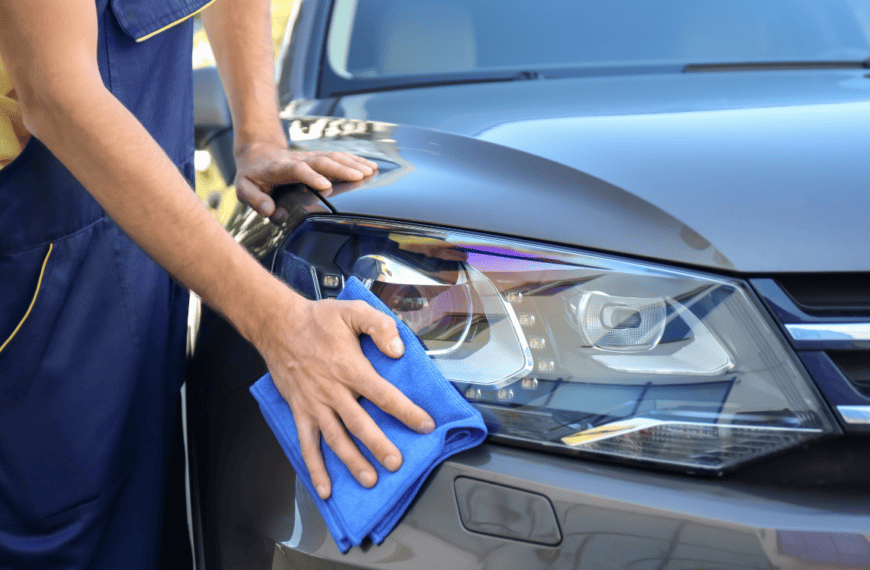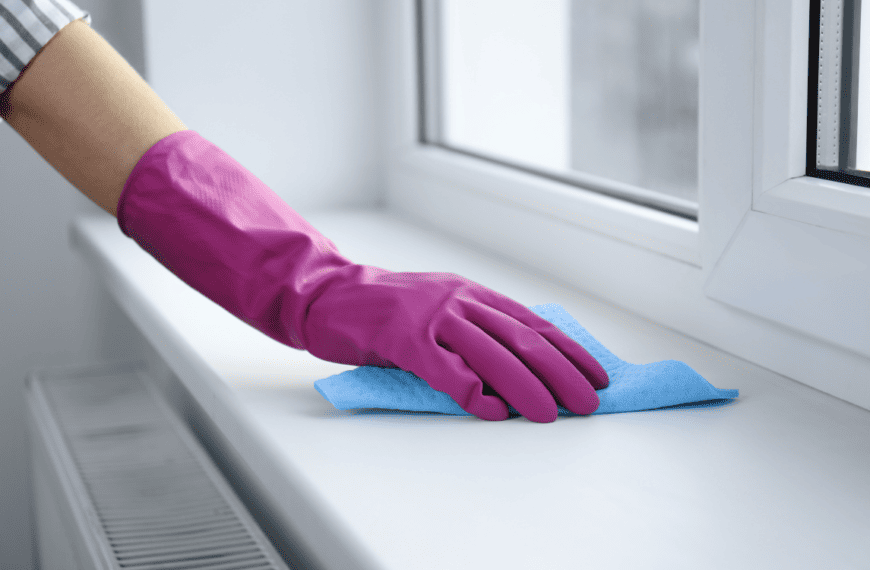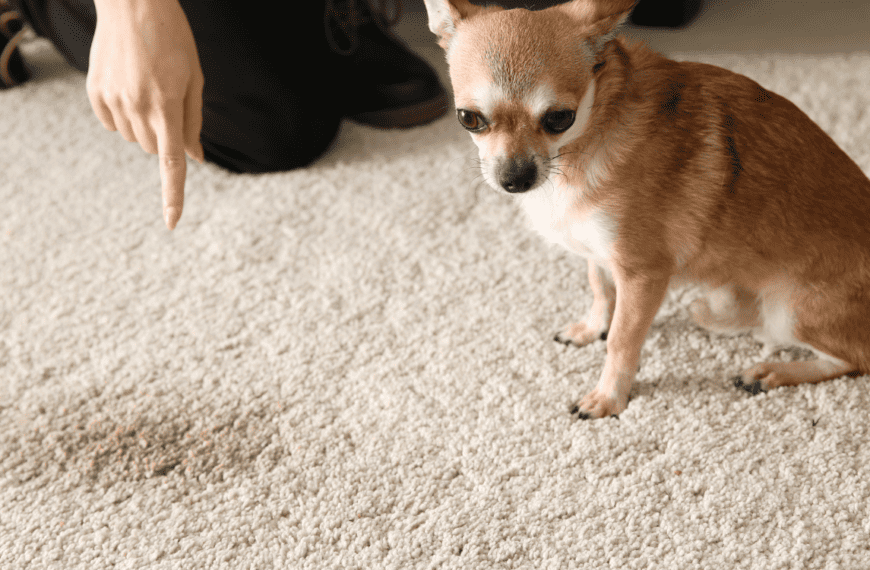Engineered wood flooring is a savvy design choice, offering a durable and attractive addition to nearly any room. It’s sophisticated yet practical and valuable enough to make it preferable to solid hardwood for most homeowners.
A pristine engineered wood floor doesn’t take care of itself. Despite its resilience, an engineered hardwood floor takes regular care to overcome the random scratches, spills, and dirt marks that life throws its way. But when maintained the right way, yours will stay fresh for years. Learn how to clean engineered hardwood floors to a gorgeous, blemish-free shine with these effortless tips.
How to Clean Engineered Hardwood Floors
You don’t want to use harsh chemicals, rough scrubbing materials, or most wet cleaning methods. Abrasive cleaners can strip away the top layer of the protective finish. Meanwhile, mopping will let excessive moisture reach the cores, causing warping, buckling, and cupping.
In general, sticking with dry cleaning methods, light wet cleaning, and a steady routine is the best way to clean engineered hardwood floors. Here’s how you can keep your engineered hardwood floors in excellent condition:
- Regularly clean engineered wood floors with a dry microfiber mop or vacuum cleaner
- Use a damp mop as an effective way to clean hardwood floors periodically, with a regular cleaning routine based on how much traffic the floor gets
- Deep clean engineered hardwood flooring with specialty water-based cleaners like Bona
With a regular cleaning routine, you can prevent the wear that will make you consider refinishing your flooring. Your engineered floors will last longer, and you’ll avoid the time-consuming labor and expense of more intense restoration. Let’s break it down to show how you can keep your engineered hardwood floor looking incredible.
Tools and Supplies
- Microfiber dust mop
- Soft-bristled broom
- Vacuum cleaner
- Wet mop and bucket with water
- Hardwood floor cleaner
- Soft cloth or sponge
Step 1: Sweep Engineered Hardwood Floors
Sweep your engineered hardwood floors at least once a week. In areas with heavy foot traffic, up the frequency to every day or two. Removing loose dirt will prevent nasty buildups and avoid damage from minor scratching.
Use a Microfiber Mop
A microfiber mop is a fantastic tool for pulling dirt from the surface and between the cracks of your wood floors. With microscopic fibers rubbing against one another, the synthetic materials in a dry microfiber mop head create static electricity that attracts and traps dirt, dust, pet hair, and other debris. It is safe on wood floors and can reach into grooves to lift loose dust hidden between boards.
If you have a Swiffer, a dry mop head attachment is perfect for lifting dirt particles from engineered hardwood. Otherwise, use a soft-bristle broom. Bristles are especially helpful for dislodging dirt between boards. Using a broom provides a convenient opportunity to clean the baseboards before hitting your wood floors.
Vacuum Cleaner
Lightweight vacuum cleaners will work on engineered hardwood floors if you don’t have a soft broom. But they leave some room for damage. Dragging dirty wheels or scraping plastic components along the finish can scratch it.
Do not use an abrasive rotating bristle bar. If your vacuum has the option, set it to the bare floor brush option to pull up dirt without letting the beater bar cause unnecessary wear.
Step 2: Wet Clean Engineered Hardwood Floors
Like traditional hardwood floors, engineered hardwood flooring does not handle water well. The finish layer will repel moisture, but it can still seep between the boards. If it penetrates the core, the wood will swell and warp.
Wet mops create too much excess water, while a steam cleaner will force moisture into the floor and speed up the damage. You also don’t want to use a fresh Swiffer wet pad to clean engineered or hardwood floors, as it will leave more liquid than is desirable.
Rather than use a steam cleaner or wet mop, use a well-wrung damp mop that won’t leave pooling water or standing water on your floor. You won’t need anything more than water, and any remaining streaks should evaporate quickly. But if any excessive water spots linger, following up with a dry towel is easy enough.
Step 3: Deep Cleaning Engineered Hardwood Flooring (Optional)
When your engineered wood floors look extra grungy, you may need to pull out a targeted deep cleaning solution. Avoid harsh chemicals like alkaline detergents and ammonia that will degrade the surface. Likewise, oil-based and wax cleaners can leave a buildup that will make your floor look dull.
Bona Hardwood Floor Cleaner and other mild, water-based products are the best cleaners for engineered floors. Mist it after dust mopping the floor, and clean it with a damp microfiber cloth or mop. Bona is a fast-drying, residue-free formula. You don’t have to worry too much about damaging or discoloring your flooring. The flooring manufacturer may also have a recommended cleaning product for their products.
What Not to Use on Engineered Wood Flooring
- Harsh alkaline or acidic products, including white vinegar
- Oil soaps or wax-based cleaners
- Steel wool, scouring pads, or other abrasive cleaning items
- Floor steamers
How to Maintain Engineered Wood Flooring
Your sweeping and mopping routine will be essential in preventing damage to your wood floors. But keeping them clean is only one side of protecting them long-term. Here are a few tips to avoid impact and water damage that could leave you with a costly repair job:
- Use entryway floor mats for anyone entering to clean their shoes
- Place a mat in front of the kitchen sink to catch spills
- Wipe up liquid spills immediately
- Lay strategic runners and area rugs to catch dirt in high-traffic areas
- Place protective felt pads under the dining table and chair legs to prevent scuff (the soft side of adhesive velcro strips also works well)
Deep scratches and excessive scuffing across the finish layer may need refinishing. Maintaining a seal is especially critical with engineered wood flooring, as gouges can be impossible to fix.
What Is Engineered Wood Flooring?
Engineered flooring has several advantages over solid hardwood floors. It is more dimensionally stable and offers similar durability and looks with a lower price tag. But with a thin veneer surface, engineered wood can’t recover from abuse like genuine hardwood.
When looking at a cross-angle of an engineered board, you’ll see that the top layer is only a few millimeters thick. Below it is a substrate of cross-linked plywood or fiberboard layers. These layers have to stay hidden for the board to look good, meaning you can’t sand or refinish often.
You can sand down surface layers of damaged hardwood to expose fresh, clean wood underneath. But wearing down engineered wood will quickly reveal the plywood layers. And once you peel back the top layer, you can’t go back. That makes it critical to maintain the top coat of your engineered floors and stick to healthy cleaning habits.
Hire a House Cleaner for Spotless Hardwood Floors
Keeping your engineered hardwood floors spotless doesn’t take much effort when you know the proper technique. But, like all cleaning chores, it can steal a decent amount of your time. Take a break from the stress and aggravation of cleaning by hiring an expert local house cleaner. Request a cleaning appointment today to discover how a few minutes of booking can save you hours of housework.









